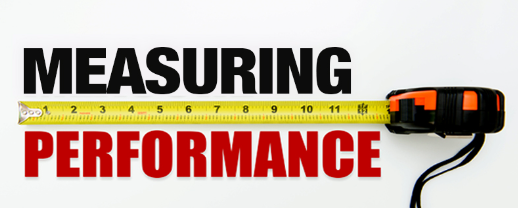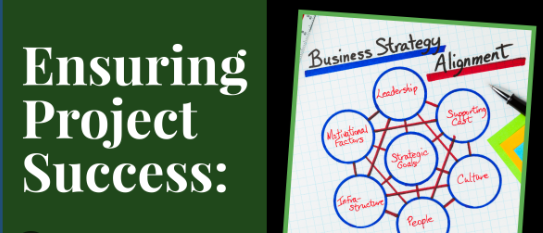It is noteworthy that project portfolio management is a strategy that helps organizations manage and control many projects effectively. It involves selecting, planning, and executing projects. Don’t forget that project prioritization and evaluation are important as they ensure alignment with organizational goals.
The process includes other activities. These are project funding, monitoring, and coordination. The good news is that they provide effective oversight and governance. What’s fascinating is that regular project status updates and reviews are part of this. They help maintain project focus.
Introduction to project portfolio management
It is well known that Project Portfolio Management (PPM) is a strategic approach in project management. It manages an organization’s projects, programs, and other work collectively. This is to achieve business objectives which includes project planning, execution, and selection. Plus, it ensures portfolio optimization and alignment.
The amazing thing about PPM is that it supports project oversight and coordination and provides robust project governance. It involves critical processes and these are project evaluation, project funding, and project monitoring. These maintain an up-to-date project status.
Definition and importance of project portfolio management
Project Portfolio Management, or PPM, is an important part of portfolio management. It is interesting to note that it focuses on planning, selecting, and coordinating projects. Project managers and project management offices use this method as they use it to analyze and manage the projects in a portfolio.

In simple terms, PPM lets organizations keep track of the status of projects. As a consequence of it, this ensures that projects are executed successfully.
Role of project portfolio management in agencies
It's a fact that PPM is crucial in agencies. It ensures that projects are executed without any issues along with providing oversight for projects. This lets agencies monitor the status of projects continuously. It also helps them stay aligned with their objectives. The great thing is that PPM assists in prioritizing projects of the agencies too, and this leads to the best use of resources and optimization of the portfolio.
In addition, PPM brings in effective project governance. This strengthens project coordination and the processes for evaluating projects.
Key components of project portfolio management
It is no surprise that Project Portfolio Management mainly consists of three parts:
- Project selection
- Project prioritization
- Portfolio optimization
It’s well known that Project selection is about choosing the right projects. These projects should align with the business goals and consider constraints like budget and resources.
And, Project prioritization is about ranking these projects. The ranking is based on the strategic value of the projects.
Portfolio optimization deals with balancing the portfolio to get the highest return on investment. But, this needs careful project evaluation, coordination, and governance.
Project governance
It’s interesting how Project governance is crucial in project management. It ensures that projects are executed successfully through proper oversight. It involves selecting projects, planning them, etc. The result is that these processes ensure that the portfolio aligns optimally.
What’s more is that effective project governance also includes project monitoring. This is about checking the status of the project and making necessary adjustments to keep the project on track.
Moreover, project governance oversees project funding and project prioritization. The cool thing is that this helps in optimizing the portfolio.
Resource management
Resource Management focuses on project planning and execution. Note that it’s about using an organization’s resources efficiently and effectively. These resources can be-
- Financial resources
- Inventory
- Human skills
- Production resources
- IT
And the abovementioned resources are used when and where needed.

In terms of project oversight, Resource Management involves coordinating and monitoring projects. It also involves updating the project status regularly.
Risk management
Risk Management includes processes like project planning, execution, and monitoring. Remember that these are all aimed at making sure any potential risk with a project is identified and reduced early.
At the same time, Risk management has a key role in portfolio management, apart from project management. The important thing is that effective risk management needs strong project governance and oversight to make sure all risks are handled properly.
Performance measurement
It’s highly significant to know about performance measurement. The cool thing about performance measurement is that it makes sure plans are carried out correctly to meet business goals.

It’s interesting how performance measurement includes prioritizing projects, selecting them, along with optimizing the portfolio. It helps align the outcomes of projects with strategic targets. This improves portfolio alignment. It is a fact that performance measurement guides project execution and coordination. It enables effective project governance and makes sound project funding decisions.
Benefits of implementing project portfolio management
One of the best things about implementing Project Portfolio Management has many benefits is that it allows projects to align strategically. It gives a complete view of risk and return. The cool thing is that it enables prioritizing and selecting projects that align with business goals. This improves portfolio optimization and alignment. Another amazing thing about implementation of the project portfolio management is that it ensures better project coordination, and accurate project evaluation.
Improved decision making
A key benefit of portfolio management is that it helps businesses make better decisions. It provides structured processes for selecting and prioritizing projects. This makes project planning and execution more streamlined.
Plus, constant monitoring of projects allows for real-time updates on project status. And the best thing is that it promotes proactive decision-making and effective coordination of projects.
Enhanced resource allocation
It’s understandable that better allocation of resources involves planning, executing, and prioritizing projects. And the good news is that effective allocation of resources can lead to successful project outcomes.

Another amazing thing about resource allocation is that proper resource allocation helps in coordinating projects. It controls project funding that helps in optimizing the portfolio.
Increased project success rates
There is no doubt that effective project management is key to increasing the success rates of projects. It involves planning and executing projects. Among the benefits of project management is that it helps maintain alignment of the portfolio and ensures goals are met. Don’t forget that project management needs strict governance and oversight.
Portfolio management is another important aspect which requires selecting and prioritizing projects. All these tools and processes contribute to increasing project success rates.
Challenges in project portfolio management
It’s obvious that project portfolio management faces several challenges. These include prioritizing and selecting projects, executing them, etc. The harsh reality is that choosing the right projects to prioritize and select is hard. It requires aligning projects with the overall business strategy.
At the same time, executing the selected projects efficiently while ensuring quality is a big issue. Coordinating different teams, and ensuring accurate project status reporting are critical but challenging tasks. Moreover, sufficient project funding is necessary. However, the truth is that securing it is often a major hurdle.
Aligning projects with business strategy
It’s understandable that effective project management needs projects to align with the business strategy. Selecting projects imply prioritizing them based on how they align with business goals.
Then, project planning considers the business’s strategic vision. This is translated into steps that can be acted on. At the end, during project execution, the amazing feature about portfolio management is that it makes sure all initiatives align with the overall business goals.

There is no doubt that project governance and monitoring are key in making sure projects align with the business strategy.
Managing resource constraints
Managing resources needs efficient project planning and execution. This process calls on checking resource availability, prioritizing projects, and smartly selecting projects. The cool thing is that this ensures initiatives are implemented successfully within the portfolio management framework.
Pro Tip: Effective strategies in managing resources can be achieved through evaluating projects to check if resources align with the project’s goals.
Dealing with project risks
It is an undeniable thing that in project management, dealing with risks involves careful planning and execution. This looks at the chances of something unwanted happening. It includes a series of activities.
These are evaluating projects to identify risks, managing the portfolio to balance risk across multiple projects, etc. The benefits of this is that it ensures the portfolio is optimized and aligned, as well as risk management is proactive rather than reactive.
Steps to implement project portfolio management
In our efforts towards effective agency planning, we must consider various factors. These include manager interaction, optimum resource allocation, and efficient project management. These components guide our project and portfolio management.
In our journey through project and portfolio management, understanding significant stages and goals can greatly streamline our processes. Article B provides a deep-dive into various optimization techniques and best practices. While pivotal, the role of defining robust project milestones cannot be emphasized enough.
It’s a harsh truth that Implementing PPM is a process with many facets. It starts with selecting projects. Potential projects are evaluated and prioritized based on how they fit strategically, etc. Note that this step might involve input from stakeholders, assessing risks, etc.
Once projects are selected, they are added to the portfolio and coordinated. This stage includes executing the project, along with ongoing monitoring of the project to track progress, manage resources, etc. Procedures for overseeing the project, including regular updates and reviews of the project status, are also set up.
Lastly, processes for project governance are set up. These include those related to funding the project, risk, and issue management. They provide structure and guidance for PPM.
Identifying and prioritizing projects
It should not be forgotten that in project management, selecting a project is the first step towards successful planning and execution of a project. This process is guided by evaluating and prioritizing projects, which are key to aligning the portfolio.
The fantastic thing about portfolio management is that it helps optimize the profile by keeping a balanced and aligned project portfolio. To ensure effective portfolio management, things like project oversight, and monitoring are very important.
Another crucial thing is that clear communication about the status of the project makes project management more effective and efficient.
Allocating resources
It’s well known that prioritizing projects plays a big role in allocating resources in project management. The process includes selecting projects based on set criteria. These mainly depend on the status and objectives of the project.
Efficient planning of the project helps in setting clear guidelines for allocating resources. The benefit of this is it ensures the project is executed smoothly. At the same time, portfolio management is also very important in allocating resources which involves evaluating projects for optimizing the portfolio and aligning projects with the goals of the organization.
Moreover, monitoring projects also contributes to effective allocation of resources.
Monitoring and adjusting the portfolio
Portfolio management is where monitoring and evaluating projects come in. Monitoring projects often keeps the status of the project clear to all involved. If the plan deviates, corrective measures are taken.
Adjustments in the portfolio are made based on prioritizing projects and optimizing the portfolio. Projects that perform well are favored and given the necessary funding. The whole process needs strong project governance and competent oversight. The amazing thing is that this ensures the portfolio is aligned.
Role of technology in project portfolio management
In order to manage both projects and portfolios effectively, understanding the time spent is crucial. The concept of billable hours versus actual hours can provide great insights on resource allocation and productivity. Applying such understanding can significantly elevate project success rates and help streamline portfolio management.
For a more comprehensive grasp on project and portfolio management, it’s crucial to understand the role and impact of digital scaling within an organization. This scale-agency article provides an insightful look into the complex world of scaling and how it directly affects project and portfolio management. Having this knowledge equips you with the necessary tools to navigate and maximize your agency’s efficiency and productivity.
During project operations, efficient resource allocation is of utmost significance. This especially applies to the proper management of working hours, for which an understanding of billable hours versus actual hours is essential. It is crucial to ensure that all processes are not just completed, but also that they are cost-efficient and productive.
In contrast to managing individual projects, portfolio management encompasses the comprehensive, strategic overview of all projects within an organization to ensure alignment with organizational objectives.
In our continued exploration of project management, it's clear that both individual and collective approaches have their merits. Particularly, effective project managing software can offer innovative solutions for sustained productivity. Balancing these tools with the broader perspective of portfolio management is crucial in achieving long-term goals.
It’s obvious that technology makes project management simpler by automating and streamlining key functions. These include planning, executing, and monitoring projects, and, therefore, this leads to a workflow that’s organized, and increased productivity.
Also, technologies like AI and data analytics help in selecting and prioritizing projects and optimizing the portfolio. The outcome is that this helps organizations align their project portfolio with their strategic goals. This ensures resources are used better and ROI is maximized.
Benefits of ising PPM software
PPM software improves project management. It does this through effective planning, execution, and monitoring of projects. It helps in prioritizing, selecting, and evaluating projects. The fascinating thing is that this makes decision-making and project governance better.
What’s more is that the software ensures projects are coordinated seamlessly while providing real-time updates on the status of projects.
In terms of managing portfolios, PPM software is a vital tool. It optimizes and aligns the portfolio. It can be said with confidence that by using PPM software, organizations can achieve their goals more efficiently and effectively.
Choosing the right PPM software: Microsoft Project vs. Oracle Primavera
It’s crucial to understand that choosing the right PPM software mostly depends on your needs for managing projects and how complex your projects are. Microsoft Project is great at providing tools for planning, executing, and coordinating projects. This makes it ideal for small to medium-sized businesses.
On the other hand, Oracle Primavera has many features. It’s ideal for large enterprises that need advanced project governance, and project prioritization functionality.
It’s noteworthy that both options offer features for monitoring projects and provide clear updates on the status of projects. But the choice ultimately depends on the specific requirements of your portfolio management.
Conclusion: The future of project portfolio management
It can be safely assumed that the future of project portfolio management is in optimizing project selection and execution using advanced technology. There is also no doubt that project planning, prioritization, and evaluation will be improved by artificial intelligence and data-driven decision making. In addition, project portfolio management will become more streamlined, enabling efficient project governance and oversight.
Project coordination and monitoring of project status will be sped up through real-time, cloud-based platforms. Eventually, portfolio management will rely heavily on automation and predictive analytics.
Emerging trends in project portfolio management
In recent years, there have been several emerging trends in project portfolio management. These are focused on improving efficiency and output. Advances in project prioritization, portfolio alignment, and project coordination are changing the way operations are carried out.
It’s important to understand that AI and machine learning are becoming key in prioritizing projects. They analyze data to determine the order of project execution. And the fascinating thing is how portfolio alignment is evolving with a growing focus on strategic objectives. This ensures resources are allocated optimally.
Adapting to changes in the business environment
It’s a fact that adapting to changes in the business environment requires strategic project management and efficient project planning. A company’s portfolio management must be optimized and aligned with market dynamics. This involves the following things-
- Careful selection of projects
- Prioritizing them based on a thorough evaluation of the project
- Effective project coordination
Furthermore, the structure of project governance must ensure appropriate project oversight. At the same time, project funding must be flexible to support necessary adjustments.







